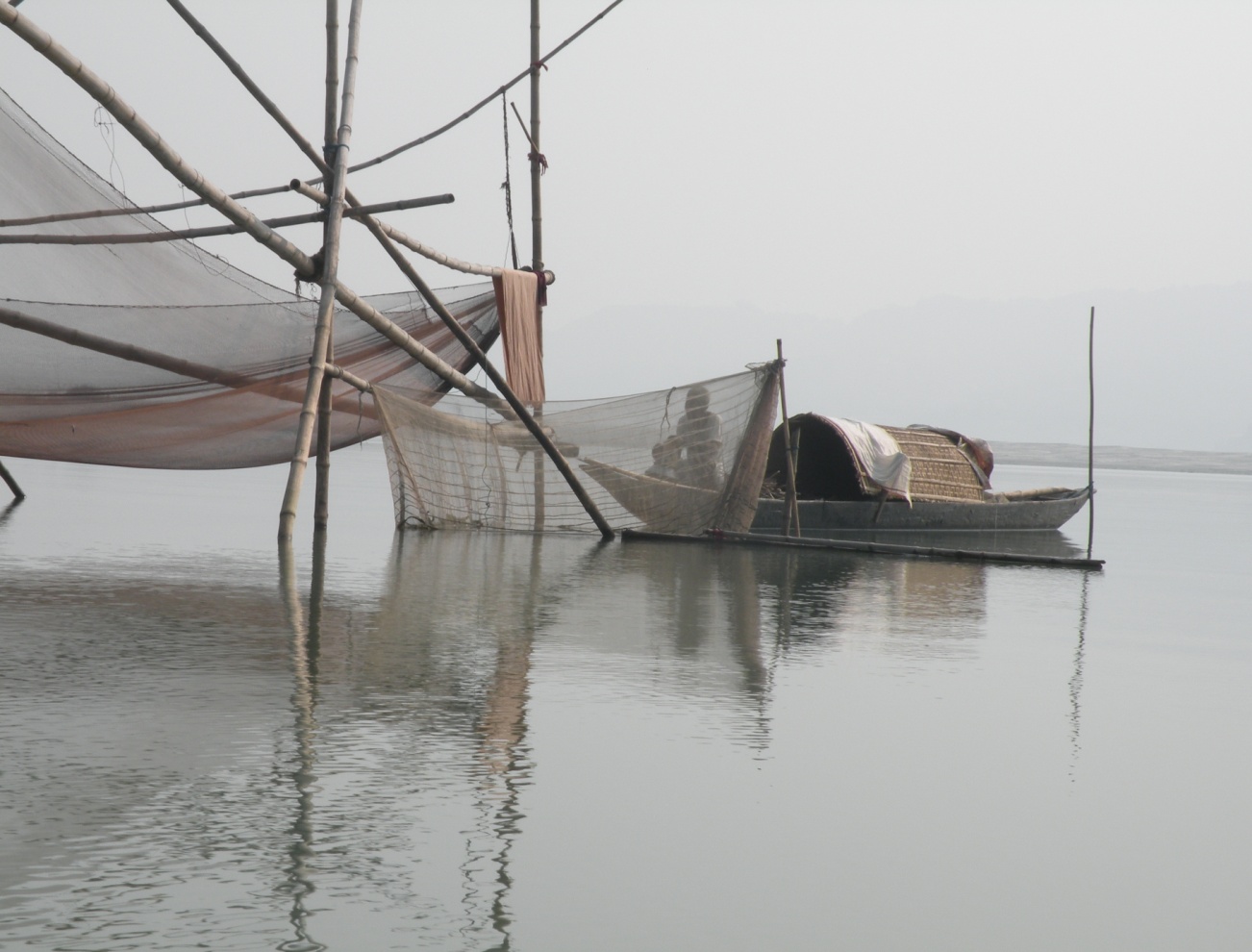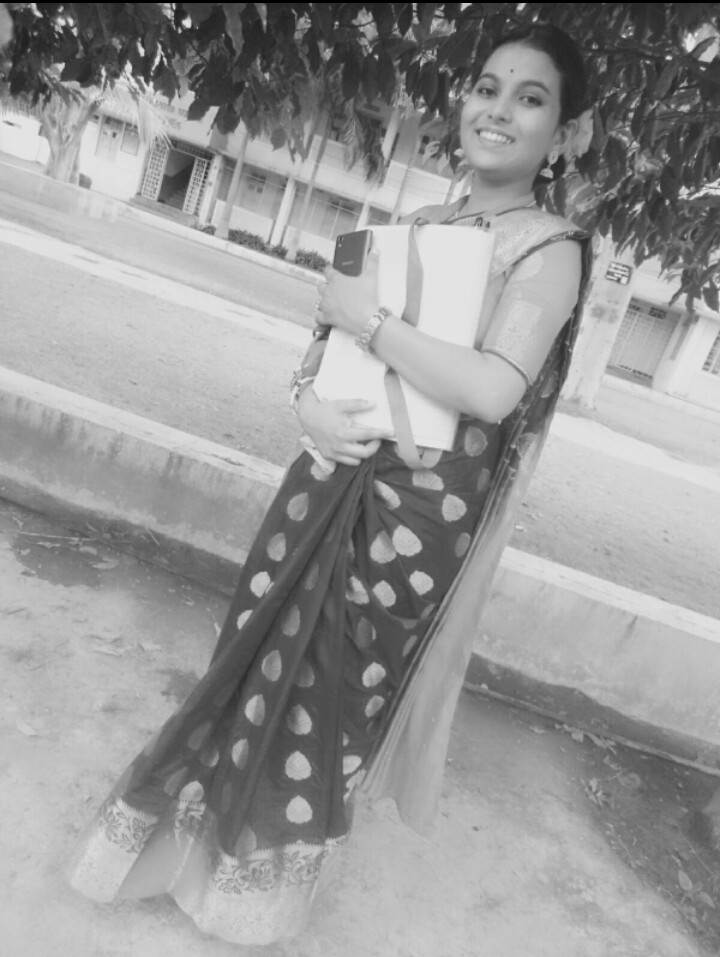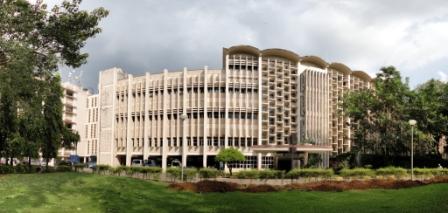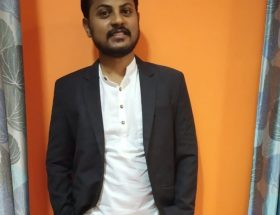Manju Rajak
This is a short write-up on a Community-based Art Project, designed by Manju Rajak, a visual artist.
Participants’ names – Deepa Burman, Lalita Burman, Surabhi Burman, Kajal Sarbwani, Dipika Burman, Nirupa Barman, Nandini Burman, Debojit Burman, Ashis Burman, Hishi Burman, Radhika Burman, Nandini Burman, Akadashi Burman, Maya Burman, Gita Burman, Bidya Burman, Binita Burman, Dlimp Burman, Monika Burman, Minakhi Das, Nayan Burman, Rakesh Burman, Bishnu Burman, Anamika Burman, Puja Burman, Santa Burman, Manoj Burman, Manis Burman, Pallab Burman, Debojit Burman, Dipika Burman, Riha Burman, Shivham Burman, Ritik Wala, Kaushik Burman, Dilip Burman, Dharitri Burman, Bhagirath Burman, Prakash Malo Das, Niranjan Burman, Shibong Burman.

Ananda Nagar is a small remote village situated on the North Banks of Brahmaputra River in North Guwahati. The inhabitants of this village are the Malo and Burman Community who are traditionally fishermen by occupation. Nearly 300 families reside in this village. This community has migrated from East Bengali speaking regions of larger Kamrupa Bengal expanse and has a very unique social and cultural history and customs. Presently, it is very difficult to acquire any comprehensive form of their own history and heritage since the community has been long detached from their own region-specific, linguistically alike fishing communities and isolated within a completely new region and culture altogether. Earlier, Ananda Nagar was known as Bongal Basti within the surrounding neighborhoods. After repeated appeals from the villagers, the village has been renamed as Ananda Nagar honoring the name of an eminent Assamese personality, Anandaram Barooah.

This project seeks to record an inclusive set of documents on cultural, intellectual, history, heritage and enigmatic layers of life of the villagers of Ananda Nagar. Most importantly this process and methods of recording will be initiated by the collective efforts of the community themselves. In the modern, neo-liberal economic context their social-cultural schemes too are changing quite rapidly. This project aims to archive the historicity of the moment of contemporary cultural flux. This economically and socially backward community carries the pearl of cultural heritage, which mostly derives from their occupation as fishermen and the community’s intimate relationship with the river.
This heritage is their only wealth. They are not economically affluent people but they have lived with the river with happiness, harmony, and rigor. Their hands on their own pen and paper can share those cultural histories, share their love, intellect, compassion, and fruitfulness into our lives. With time and social-cultural social circumstances, communities lose their heritage. It is like we don’t know ourselves properly and we fight every day to become modern to deal with the current contexts of life. Each day we have to neglect our nostalgia, memory of childhood and other forms of happiness. We start forgetting our spoken and cultural languages because we have to allocate our livelihood among the complex parameters of modern society.

In this project we will give particular emphasis on writing/sharing the old stories from our grandparent’s history, on the cultural roots, experiences being a community that bears various spiritual relationships with the river, experiences that are beyond the comprehension of other communities. The huge mighty Brahmaputra River and we all stay in a corner of the riverbank. When we go outside our familiar environment, we face a different and challenging life in modern urban spaces. A life with full of difference, dominance, and discrimination. We lose our cultural roots in this process and affection between our own community members. The mind and intellect, framed by the sociological and anthropological contexts of Ananda Nagar village, we feel we are still shining like crystals. We all are unique individuals we have to collect the shine from our village. Let’s have a look how our culture is? What kind of literature can evolve, if we can hold tight and write a story on our own life?

India is a multicultural country; thousands of diverse communities and caste culture co-exist. People have their own linguistic, regional states and they follow their own unique cultures. This project also will aim to investigate complex factors of history and the surrounding cultural influences and exchanges in the formation of the identity of each other. There the project will attempt to heal a complex network of social insecurity, cultural and psychological anxieties that the community has been subjected to for various historical reasons. One of our aims is to encounter our history through visual story-telling methods, where they will write about their history and memory, recreate literature, daily living, the struggle of the complex bias of a different culture on their life and recreate their history, in both oral, textual and visual processes. Through these processes, we will realize how our history is important and why we will encounter our specific history. The history is very important to be kept alive in our memories as it reminds us of who we are. Without knowing so many aspects of history how can we expand our knowledge of heritage, literature, life, memory, heroic role of our ancestors in the history of the community and its struggle for survival? The visual storytelling method will be an archive on community’s life, intuition, love, as well as sociology and anthropology.





Focus on Socioeconomic Growth and Community Relations
One of the significant enquiries will be on the question of how the community played an important role in economic growth of the region. Villagers of Ananda Nagar earn their livelihood by catching and selling fishes in different markets of Guwahati and North Guwahati. Basically male members are involved in fishing and most female members work as housemaids in middle-class families of neighboring areas of Rajaduwar, Madhayamkhanda and Silsaku. Apart from this, the women in the village also engage in making muri (puffed rice), muri laddu, till laddu and sell the same in different areas of North Guwahati. This being a pattern of livelihood for many decades, we will seek to engage with the perspectives of the villagers about their aspirations and trails.
In most of Assam, Assamese boats are different from the Bengali speaking fishermen’s boats. The mechanized boats, locally known as Bhotbhoti, is a modified design derived from the Bengali speaking fishermen’s boats, which usually has a sharp pointed end and more wooden planks within. Now the people in North Guwahati and other places use these mechanized boats for their survival and also it enhances economic growth of many communities in the neighborhood. The Community of Ananda Nagar weaves a different kind of net for fishing and also they had been playing an important role in small-scale agriculture and farming.
It is important to understand all these various socio-economic contributions of the community towards shaping the prosperity of the larger neighborhood. Knowing their pure essence of inner humanism and internal working power configurations will develop knowledge and literature of the community. In the future, this opens various possibilities of a structure of knowledge building, from where renowned poets, filmmakers, and writers of the community will develop their own social history. Our project will create a bridge of knowledge and empowerment of their life. Empowerment of social value is very important for community life. So empowerment will unfold histories where we will confront their dialogues of Life, folk cultures accompanied by the new thesis of their own literature, which will deliver an intellectual and spiritual dimension of community life.
This project is supported by Directorate of Museum, Government of Assam, and Amarendra Das, Barpeta, Samata Sainik Dal, Assam.
~~~
Manju Rajak is a Visual Artist.










